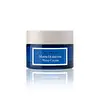What's inside
What's inside
 Key Ingredients
Key Ingredients

 Benefits
Benefits

 Concerns
Concerns

 Ingredients Side-by-side
Ingredients Side-by-side

Water
Skin ConditioningDimethicone
EmollientGlycerin
HumectantPropylene Glycol
HumectantPropanediol
SolventPanthenol
Skin ConditioningDimethicone/PEG-10/15 Crosspolymer
Bisabolol
MaskingDiisopropyl Sebacate
EmollientSodium Chloride
MaskingPhenoxyethanol
PreservativePolymethylsilsesquioxane
Chlorphenesin
AntimicrobialCitrus Limon Peel Oil
MaskingSodium Citrate
BufferingCalendula Officinalis Flower Extract
MaskingLimonene
PerfumingPEG-10 Dimethicone
Skin ConditioningTrisodium Ethylenediamine Disuccinate
Calendula Officinalis Flower
Skin ConditioningCitric Acid
BufferingDipropylene Glycol
HumectantGeranium Maculatum Oil
MaskingChamomilla Recutita Flower Oil
MaskingCitral
PerfumingCitronellol
PerfumingGeraniol
PerfumingFarnesol
PerfumingLinalool
PerfumingTocopherol
AntioxidantCymbopogon Schoenanthus Oil
MaskingArtemisia Absinthium Extract
Skin ConditioningWater, Dimethicone, Glycerin, Propylene Glycol, Propanediol, Panthenol, Dimethicone/PEG-10/15 Crosspolymer, Bisabolol, Diisopropyl Sebacate, Sodium Chloride, Phenoxyethanol, Polymethylsilsesquioxane, Chlorphenesin, Citrus Limon Peel Oil, Sodium Citrate, Calendula Officinalis Flower Extract, Limonene, PEG-10 Dimethicone, Trisodium Ethylenediamine Disuccinate, Calendula Officinalis Flower, Citric Acid, Dipropylene Glycol, Geranium Maculatum Oil, Chamomilla Recutita Flower Oil, Citral, Citronellol, Geraniol, Farnesol, Linalool, Tocopherol, Cymbopogon Schoenanthus Oil, Artemisia Absinthium Extract
Water
Skin ConditioningDimethicone
EmollientPropanediol
SolventCocos Nucifera Fruit Juice
EmollientAcrylamide/Sodium Acryloyldimethyltaurate Copolymer
Emulsion StabilisingAmmonium Acryloyldimethyltaurate/Vp Copolymer
Dimethicone Crosspolymer
Emulsion StabilisingKappaphycus Alvarezii Extract
Skin ConditioningAlteromonas Ferment Extract
Skin ConditioningMelia Azadirachta Leaf Extract
Skin ConditioningMelia Azadirachta Flower Extract
Skin ConditioningCorallina Officinalis Extract
Skin ConditioningCoccinia Indica Fruit Extract
Skin ConditioningSodium Hyaluronate
HumectantSea Water
HumectantIsohexadecane
EmollientGlucose
HumectantAloe Barbadensis Flower Extract
EmollientSolanum Melongena Fruit Extract
Skin ConditioningGlycerin
HumectantCurcuma Longa Root Extract
MaskingOcimum Basilicum Flower/Leaf Extract
TonicOcimum Sanctum Leaf Extract
Skin ConditioningPhenoxyethanol
PreservativeButylene Glycol
HumectantCetyl Diglyceryl Tris(Trimethylsiloxy)Silylethyl Dimethicone
Emulsion Stabilising1,2-Hexanediol
Skin ConditioningCaprylyl Glycol
EmollientPolysorbate 80
EmulsifyingMaltodextrin
AbsorbentHexadecene
SolventSodium Hydroxide
BufferingTocopherol
AntioxidantWater, Dimethicone, Propanediol, Cocos Nucifera Fruit Juice, Acrylamide/Sodium Acryloyldimethyltaurate Copolymer, Ammonium Acryloyldimethyltaurate/Vp Copolymer, Dimethicone Crosspolymer, Kappaphycus Alvarezii Extract, Alteromonas Ferment Extract, Melia Azadirachta Leaf Extract, Melia Azadirachta Flower Extract, Corallina Officinalis Extract, Coccinia Indica Fruit Extract, Sodium Hyaluronate, Sea Water, Isohexadecane, Glucose, Aloe Barbadensis Flower Extract, Solanum Melongena Fruit Extract, Glycerin, Curcuma Longa Root Extract, Ocimum Basilicum Flower/Leaf Extract, Ocimum Sanctum Leaf Extract, Phenoxyethanol, Butylene Glycol, Cetyl Diglyceryl Tris(Trimethylsiloxy)Silylethyl Dimethicone, 1,2-Hexanediol, Caprylyl Glycol, Polysorbate 80, Maltodextrin, Hexadecene, Sodium Hydroxide, Tocopherol
 Reviews
Reviews

Ingredients Explained
These ingredients are found in both products.
Ingredients higher up in an ingredient list are typically present in a larger amount.
Dimethicone is a type of synthetic silicone created from natural materials such as quartz.
What it does:
Dimethicone comes in different viscosities:
Depending on the viscosity, dimethicone has different properties.
Ingredients lists don't always show which type is used, so we recommend reaching out to the brand if you have questions about the viscosity.
This ingredient is unlikely to cause irritation because it does not get absorbed into skin. However, people with silicone allergies should be careful about using this ingredient.
Note: Dimethicone may contribute to pilling. This is because it is not oil or water soluble, so pilling may occur when layered with products. When mixed with heavy oils in a formula, the outcome is also quite greasy.
Learn more about DimethiconeGlycerin is already naturally found in your skin. It helps moisturize and protect your skin.
A study from 2016 found glycerin to be more effective as a humectant than AHAs and hyaluronic acid.
As a humectant, it helps the skin stay hydrated by pulling moisture to your skin. The low molecular weight of glycerin allows it to pull moisture into the deeper layers of your skin.
Hydrated skin improves your skin barrier; Your skin barrier helps protect against irritants and bacteria.
Glycerin has also been found to have antimicrobial and antiviral properties. Due to these properties, glycerin is often used in wound and burn treatments.
In cosmetics, glycerin is usually derived from plants such as soybean or palm. However, it can also be sourced from animals, such as tallow or animal fat.
This ingredient is organic, colorless, odorless, and non-toxic.
Glycerin is the name for this ingredient in American English. British English uses Glycerol/Glycerine.
Learn more about GlycerinPhenoxyethanol is a preservative that has germicide, antimicrobial, and aromatic properties. Studies show that phenoxyethanol can prevent microbial growth. By itself, it has a scent that is similar to that of a rose.
It's often used in formulations along with Caprylyl Glycol to preserve the shelf life of products.
Propanediol is an all-star ingredient. It softens, hydrates, and smooths the skin.
It’s often used to:
Propanediol is not likely to cause sensitivity and considered safe to use. It is derived from corn or petroleum with a clear color and no scent.
Learn more about PropanediolTocopherol (also known as Vitamin E) is a common antioxidant used to help protect the skin from free-radicals and strengthen the skin barrier. It's also fat soluble - this means our skin is great at absorbing it.
Vitamin E also helps keep your natural skin lipids healthy. Your lipid skin barrier naturally consists of lipids, ceramides, and fatty acids. Vitamin E offers extra protection for your skin’s lipid barrier, keeping your skin healthy and nourished.
Another benefit is a bit of UV protection. Vitamin E helps reduce the damage caused by UVB rays. (It should not replace your sunscreen). Combining it with Vitamin C can decrease sunburned cells and hyperpigmentation after UV exposure.
You might have noticed Vitamin E + C often paired together. This is because it is great at stabilizing Vitamin C. Using the two together helps increase the effectiveness of both ingredients.
There are often claims that Vitamin E can reduce/prevent scarring, but these claims haven't been confirmed by scientific research.
Learn more about TocopherolWater. It's the most common cosmetic ingredient of all. You'll usually see it at the top of ingredient lists, meaning that it makes up the largest part of the product.
So why is it so popular? Water most often acts as a solvent - this means that it helps dissolve other ingredients into the formulation.
You'll also recognize water as that liquid we all need to stay alive. If you see this, drink a glass of water. Stay hydrated!
Learn more about Water